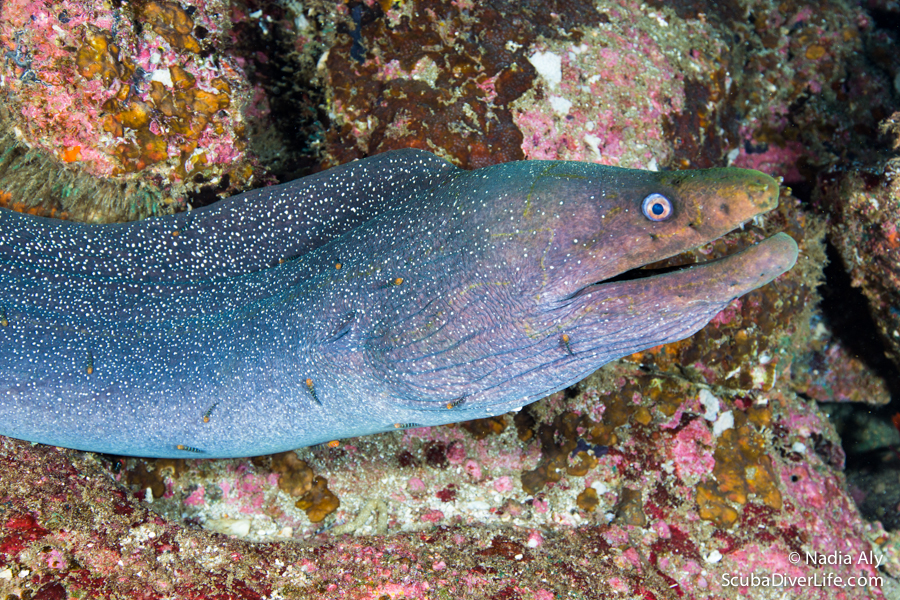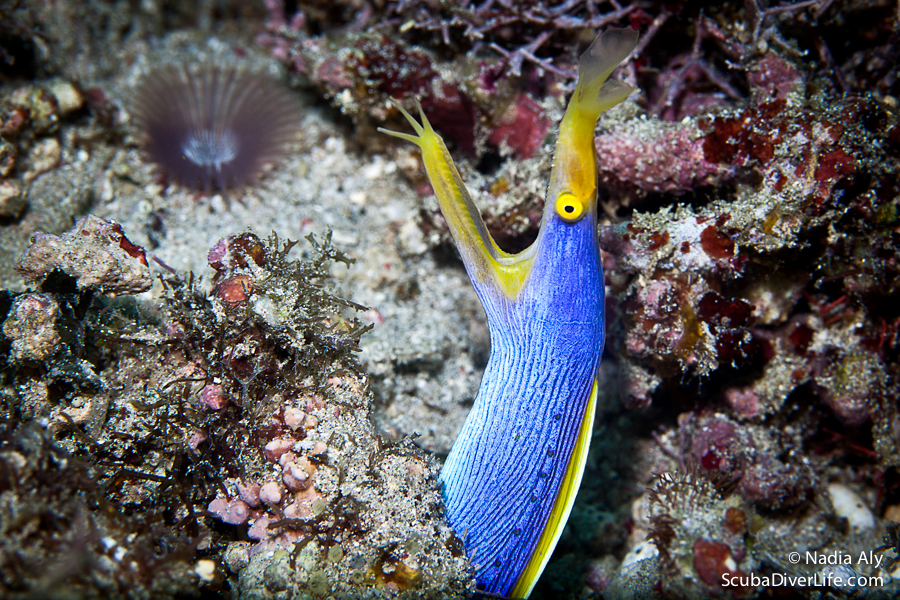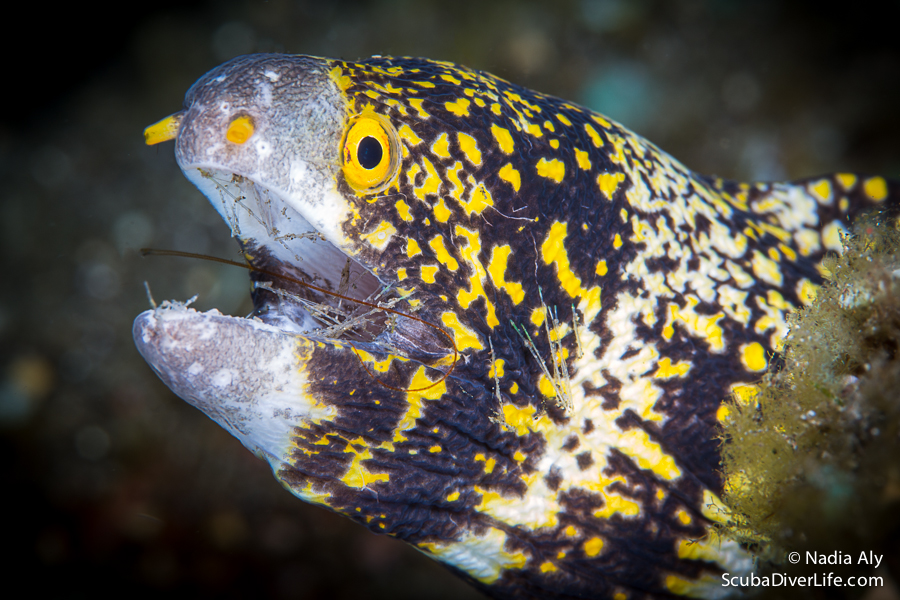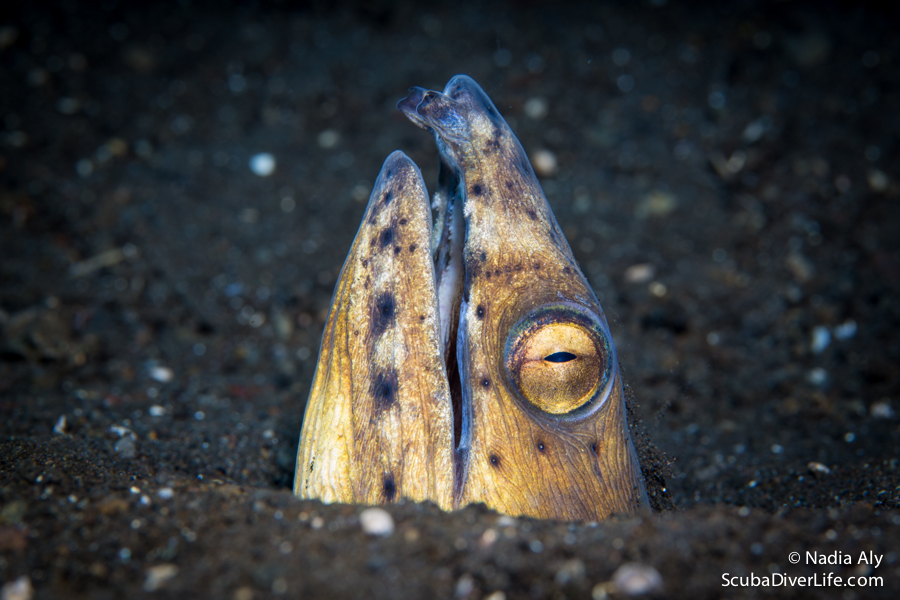It was another gorgeous diving day in South Florida. Visibility was not perfect but the wide variety of marine habitat that crossed my path surely made up for that.
I witnessed a nurse shark lazily gliding by, and a number of huge lobsters peeking out of their makeshift homes as if to tantalize us and remind us that mini-lobster season is just around the corner. Schools of spadefish swam with the movement of the current and my very favorite fish, the spotted trunkfish, was enjoying a luscious afternoon meal. The beauty of the angelfish and parrotfish are as amazing as gazing up at the ceiling of the Sistine Chapel. One relatively large lionfish in hiding was a reminder that no matter how hard we try, we still must deal with their destructive appetite.
But perhaps the most memorable part of my 2-tank dive was coming up on 3 different species of eels on separate occasions. It got me to thinking about this creature that resembles a prehistoric sea monster. I craved more knowledge about the creature.
First, there was the unusual tiny eel with only a portion of his head in full view and the rest of his body hidden within the coral rock. Then, there was the beautiful spotted eel that slithered through the water with only one thought in mind and that was finding and attacking his prey in order to fill his belly and satisfy his craving. As I had never seen before, I witnessed the eel taking what looked to be a grunt into his mouth and devouring it whole within an instant. The largest eel was saved for last as a good-sized moray eel glanced up from beneath a rock at me with wide eyes and menacing teeth as if to say, “Stay away from my home.”
So what are some fun facts about eels? In both salt and fresh water, there are over 400 species of eels. Known as bottom dwellers, they hide in the mud or sand strategizing how they will attack their next meal. Some are more aggressive and go into crannies and holes in order to search out their prey. The moray eel alone is found in over 100 species. The biggest asset that they have been given for nocturnal hunting is a keen sense of smell to compensate for poor eyesight and hearing. Eels have the ability to swim backwards and forwards. Interestingly enough, although we find them in water, they do have the ability to travel on land for very short distances. They are remarkable as they tie their bodies in knots and use this uncanny ability to gain leverage when tearing food. Their appetite ranges from worms, snails, frogs, shrimp, mussels and lizards to small fish.
Like any other species, the birth of an eel is one of the wonders of the deep. They begin their existence as transparent larva and stay that way for 6-12 months. During this time, they can travel thousands of miles in the ocean. The next stage is as elvers which is somewhat the same as becoming the adult eel. Depending on the species of eel, sizes can range anywhere from 5 feet all the way up to 11 1/2 feet. Their weight varies but there have been some that have been recorded at weighing 100 pounds.
Moray eels are scaleless and cover their camouflaged bodies with protective mucus. Any time you come upon these eels, their mouths are open as a means to facilitate their breathing. They have circular gills and sharp backward curving teeth that are wound-inflicting on not only marine life but humans as well when they feel threatened. Believe it or not, the eel may seem intimidating but they would rather avoid divers and go on their merry way.
Those eels that live deep in the ocean are most always gray or black and those that are inhabitants of tropical waters have bright patterns and colours.
So next time you happen to run across an eel on one of your dives, take some time to examine them from afar because they are thought-provoking creatures that have become one of the many wonders of the deep.





